RDM Innovation Deck by Groosman Partners
Dutch architecture firm Groosman Partners has suspended an office complex beneath the eight-metre-high ceiling of a former industrial machine hall in Rotterdam (+ slideshow).
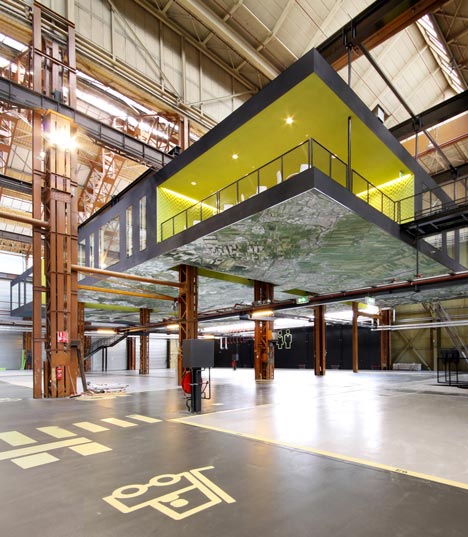
The inserted floor adds 1000 square metres of offices and meeting rooms to the building, which was formally home to the Rotterdam Dry Dock Company but is now used as an education and technology centre called The Innovation Dock.
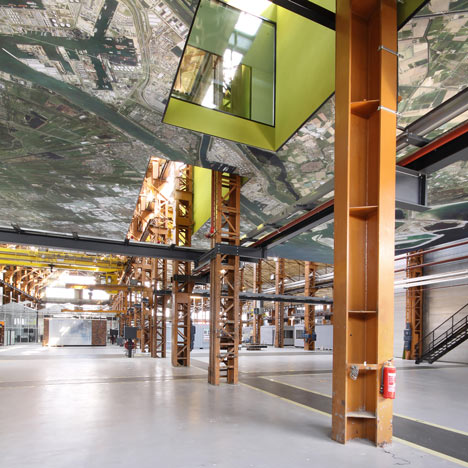
Groosman Partners wanted to take advantage of the hall's high ceilings and was inspired by the industrial crane structures that form the building's framework. The architects hung the new storey from the structure, then added an external staircase and elevator for access.
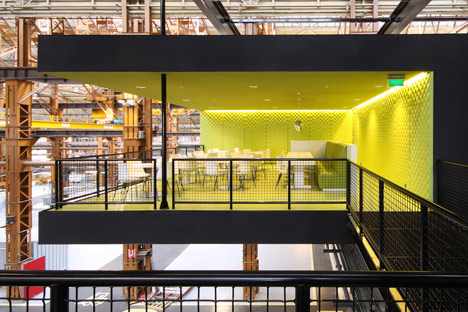
Dubbed the Innovation Deck, the extra floor is made up of a series of sub-dividable units, as well as a neon yellow social area for informal meetings or lunch breaks.
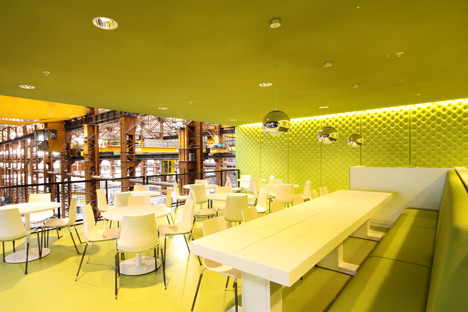
An enormous aerial photograph of Rotterdam's port covers the base of the structure, which the architects describe as a reference to the concept of "a city inside a hall".
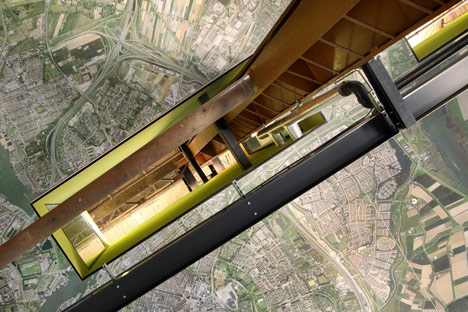
The entire storey was designed to be dismountable if necessary and can also be extended to add more units.
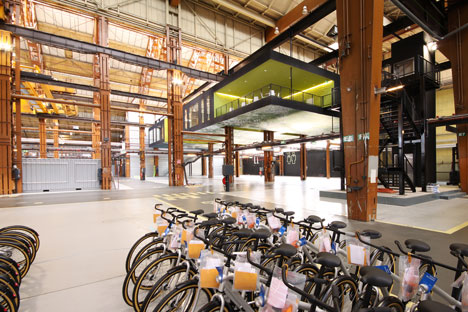
The project is one of a handful of recent warehouse renovations in Rotterdam. Others include a steel plant converted into the headquarters of an engineering firm.
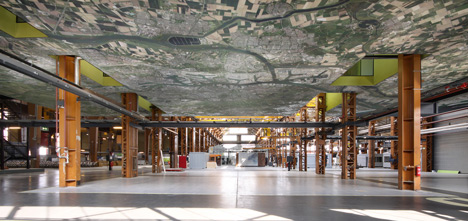
Photography is by Theo Peekstok.
See more architecture in Rotterdam »
Here's a project description from Groosman Partners:
DM Innovation Deck Rotterdam
In the heart of the ports of Rotterdam, Groosman Partners Architecten used a crane track in a former machine hall to suspend 1000 m2 of office space. The hall is situated on the terrain of RDM (Rotterdam Dry-dock Company), a former shipyard recently rebuilt into a campus for education and innovation. The Innovation Dock is in use by schools and small-scale and innovative companies operating in the markets "building, moving & powering".
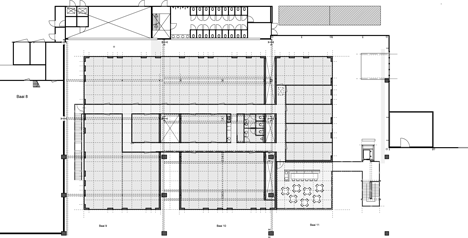
Above: floor plan - click above for larger image
An urban shelving unit
In order to achieve a logical system on the ground floor Groosman and Partners used an urban design-like grid painted on the floor. Because of the enormous height a large part of the inner volume of the halls remained unused. Groosman Partners Architecten launched the idea to add a second grid system on the level of 8 meters high, to double the usable surface of the halls. Several ways of use can be implemented within this technical framework and change of use can be easily realised. The plug-in system is extendable as well as dismountable. The floor underneath the added structure is used for production as well as events. Referring to the concept of a city inside a hall, a large photograph of a detailed satellite image of the port of Rotterdam was placed on the underside of the office.
The intermediate floor
The idea of the shelving unit derived from the unused crane tracks, which demonstrated their carrying capacity before. The extra loading capacity is used to "hang" the new functions in the structure. The first unit, the intermediate floor with 1000 m² floor space, is accessed by an external staircase and elevator. These are connected to a system of gangways which lead to the several additional units.
The units, designed as steel structures with light and flexible fill-ins, are attached to supporting beams in between the crane tracks. The suspended level coinciding with the existing construction is kept open, whereby voids are created. In doing so the structure is maximally exhibited and a reference to the former industrial use is assured.
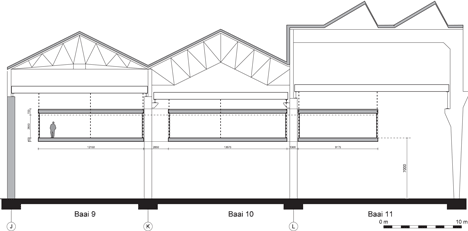
Above: section - click above for larger image
Function: education and offices
Area: 1000sqm
Design: 2011
Constructed: 2012
Site: RDM-kade, Rotterdam
Architecture: Groosman Partners I architecten, Rotterdam
Interior design: Groosman Partners I interieur, Rotterdam
Project Architect: Gert de Graaf
Photographs: Theo Peekstok
Client: Het Havenbedrijf N.V., Rotterdam
Contractor: Era Contour, Zoetermeer
Consultant building physics and installations: DWA, Bodegraven
Structural engineering: Pieters Bouwtechniek B.V., Delft